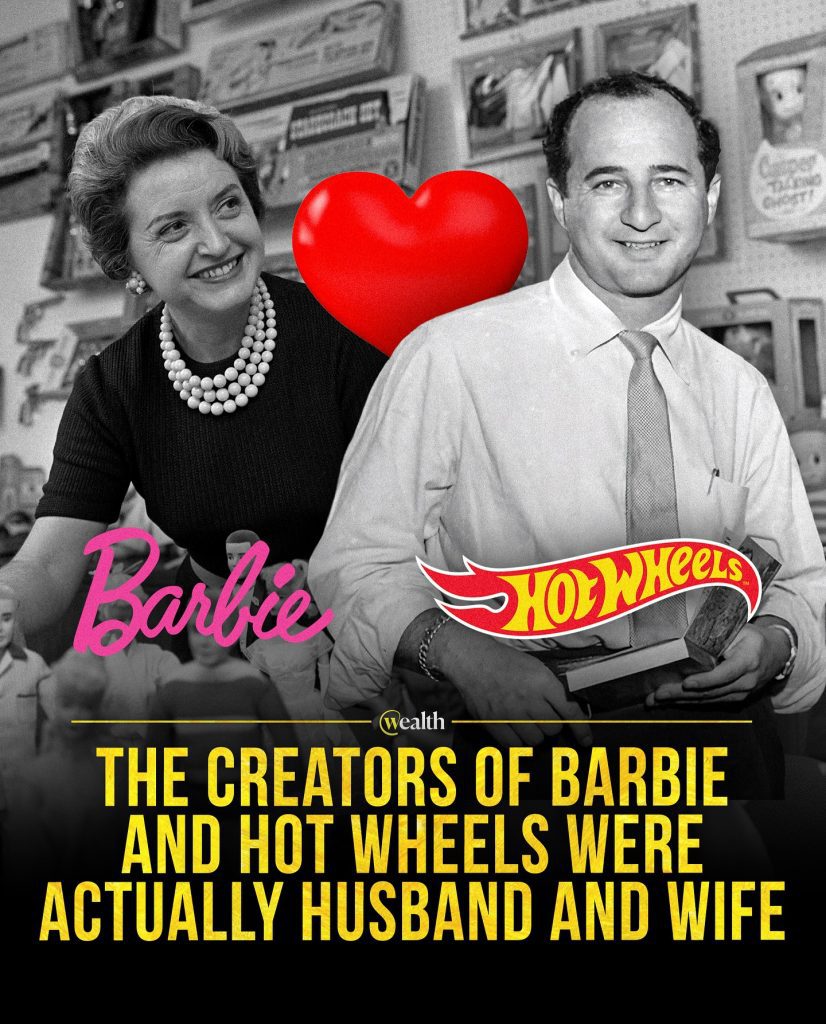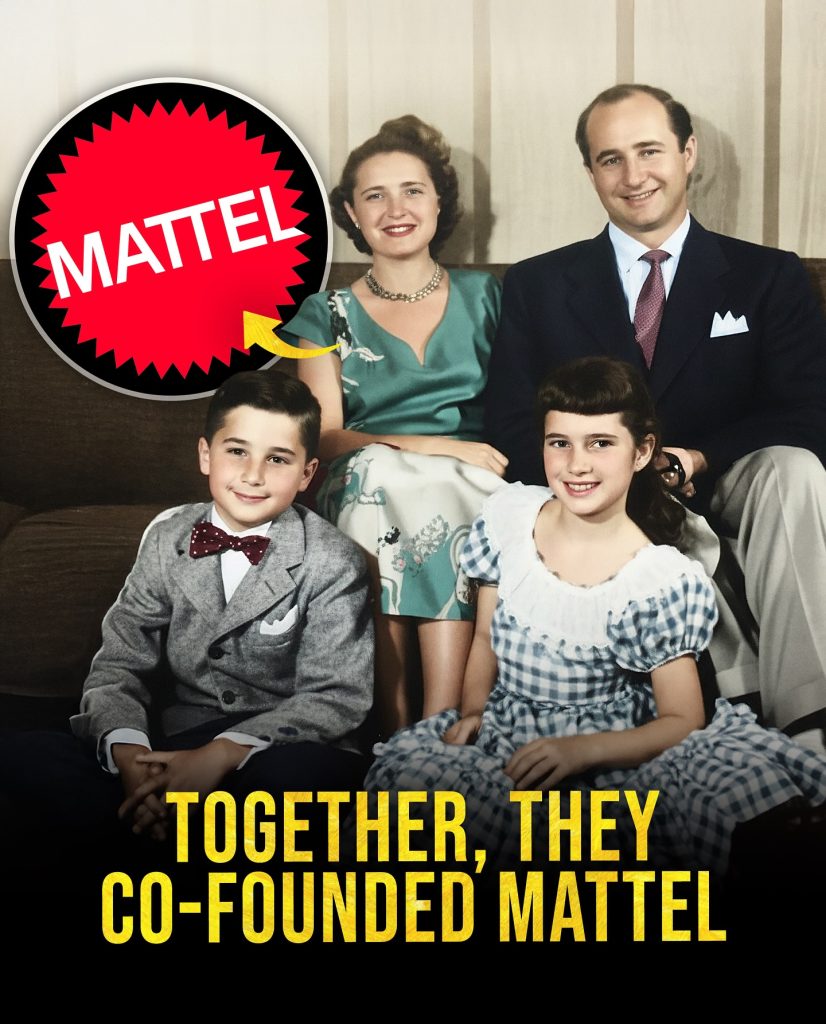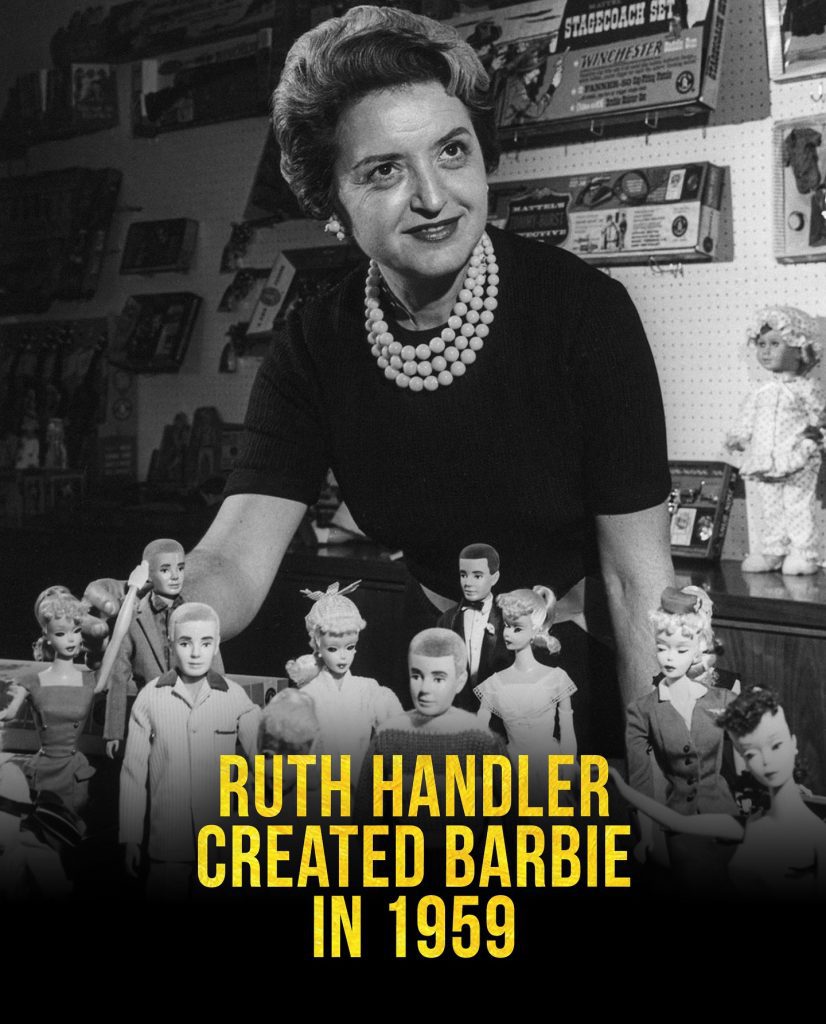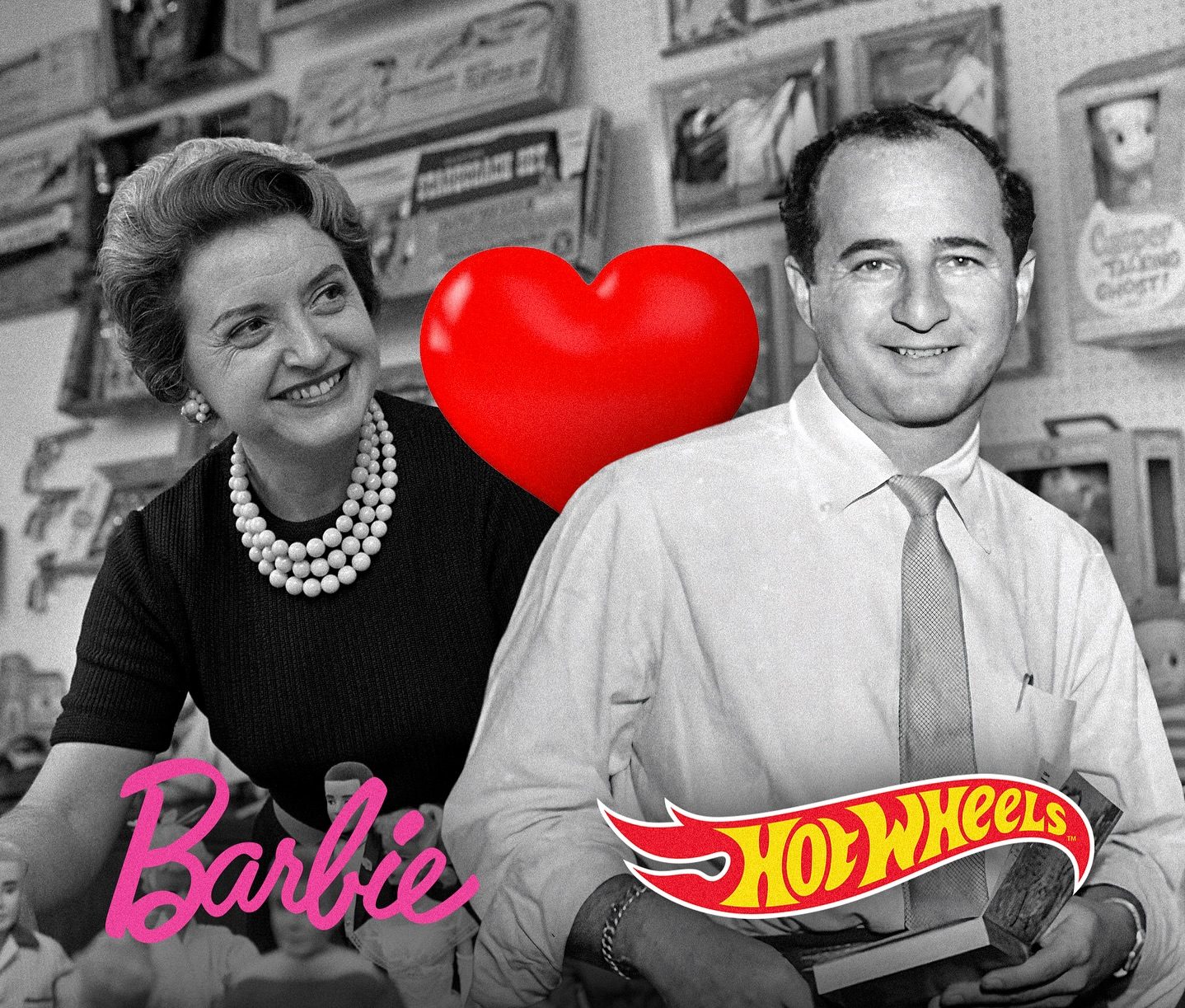The Creators of Barbie and Hot Wheels Were Actually Husband and Wife — and Their Love Story Built One of the Greatest Toy Empires in History
The Creators of Barbie and Hot Wheels Were Actually Husband and Wife

When you think of Barbie or Hot Wheels, you probably imagine childhood memories — tiny hands dressing up dolls or racing miniature cars across the floor. What most people don’t realize is that both of those worlds, so different in style and imagination, were born under one roof. Ruth and Elliot Handler, a husband-and-wife duo from Los Angeles, turned their shared dream into a global phenomenon that changed how children played — and how the world saw creativity.
Their story isn’t just about toys. It’s about vision, risk, and love — the kind of partnership that turns small ideas into legacies. Together, they built Mattel, a company that became synonymous with imagination.
Together, They Co-Founded Mattel

Back in 1945, Ruth and Elliot Handler started Mattel in a small Los Angeles garage with their friend Harold Matson — the “Mat” in “Mattel.” The name was a blend of Matson and Elliot, but it was Ruth who gave the company its soul.
They didn’t have fancy investors or giant factories then. Ruth handled business and marketing while Elliot, who had a passion for design, focused on creating toys. Their earliest products were picture frames, and with the leftover scraps of wood, they began making dollhouse furniture. Those little wooden toys caught people’s attention — and that’s when Ruth realized something big.
While most companies were thinking small, she was dreaming big. Ruth saw how toys could be more than playthings — they could represent dreams, ambitions, and the endless curiosity of children.
From that vision, the foundation for Mattel was laid — a company built on the belief that play shapes who we become.
Ruth Handler Created Barbie in 1959

In the 1950s, Ruth noticed something during playtime with her daughter, Barbara. The little girl didn’t just want to play “mom” with baby dolls — she wanted her dolls to be adults, to have lives, dreams, and careers. At the time, that idea was almost unheard of.
Women were expected to be homemakers, not leaders or dreamers. But Ruth saw an opportunity — not just for a doll, but for a statement.
Inspired by a German doll called Bild Lilli, Ruth reimagined it with a purpose. She wanted to create a doll that showed girls they could be anything they wanted to be — a doctor, a pilot, a CEO. That’s how Barbie was born, named after her daughter.
When the first Barbie was unveiled at the 1959 New York Toy Fair, people were skeptical. A doll with an adult figure wearing makeup and fashionable clothes? It was a risk. But Ruth believed in her vision.
Within months, Barbie became a sensation. Girls saw in her a reflection of their dreams — independent, stylish, and full of possibility. She wasn’t just a toy; she was a symbol of empowerment before the word was mainstream.
Ruth Handler once said, “My whole philosophy of Barbie was that through the doll, the little girl could be anything she wanted to be.”
Barbie wasn’t just plastic — she was possibility.
Elliot Handler Created Hot Wheels in 1968

While Ruth reshaped what dolls could mean for girls, her husband Elliot was working on something that would change the world for boys.
Elliot, who had always been fascinated by cars and design, noticed that most toy cars back then were slow and clunky. He wanted something exciting — sleek, colorful, fast.
Working with a team of engineers, he designed miniature cars with axles that rolled smoothly, making them faster than anything else on the market. The first Hot Wheels car — a gleaming blue “Custom Camaro” — hit stores in 1968. It was an instant hit.
Kids were hooked. They didn’t just play with cars — they raced them, collected them, built worlds for them. Elliot had tapped into the same sense of imagination Ruth had sparked with Barbie — just in a different form.
He once said, “Every boy I knew wanted to go fast. I just gave them the wheels.”
From that moment, Hot Wheels became more than toys — they were legends in motion.
Together, They Changed the Way the World Played
What makes the Handlers’ story so incredible is how their creations complemented each other. Ruth gave the world a doll that represented ambition and imagination; Elliot gave it cars that represented speed and freedom. Both were about movement — Barbie climbing ladders of possibility, Hot Wheels racing toward endless horizons.
Their partnership was built on mutual respect and vision. Ruth was the business powerhouse; Elliot was the creative mind. Together, they weren’t just making toys — they were building icons that would define generations.
By the late 1960s, Mattel had become a global name, and their home had become the birthplace of two revolutions in play. Children across the world grew up with Barbie’s dream houses and Hot Wheels race tracks — and in a way, they were growing up with the Handlers’ story without even knowing it.
Legacy That Never Faded
The Handlers’ influence on culture is undeniable. Barbie became a global figure, evolving through decades of change — from astronaut to entrepreneur, from a 1950s homemaker to a 21st-century icon of empowerment.
Hot Wheels, on the other hand, became the ultimate collectible. More than 6 billion Hot Wheels cars have been sold since their creation — more than the number of real cars ever manufactured.
But beyond the fame and fortune, their true legacy lies in the message behind their inventions. Ruth and Elliot believed in creativity as a force that could shape the world. They didn’t just sell toys — they inspired dreams.
Even after facing challenges later in life, including Ruth’s battle with breast cancer and her creation of prosthetic products for survivors, the Handlers never lost their drive to innovate and help others.
Their love story — one that began in the heart of Los Angeles — ended up touching every corner of the planet through two of the most beloved toy lines ever created.
If You Like Learning, Wealth Is the Page for You
The story of Ruth and Elliot Handler reminds us that behind every great idea, there’s a spark of love, courage, and creativity. Barbie and Hot Wheels weren’t just toys — they were reflections of human imagination, crafted by two people who believed in dreaming without limits.
So the next time you see a Barbie doll on a shelf or a Hot Wheels car speeding down a track, remember this: they both came from the same home, the same heart, and the same love story that started with a husband and wife chasing their shared dream.
It’s proof that sometimes, the greatest creations don’t come from competition — they come from collaboration. ❤️

